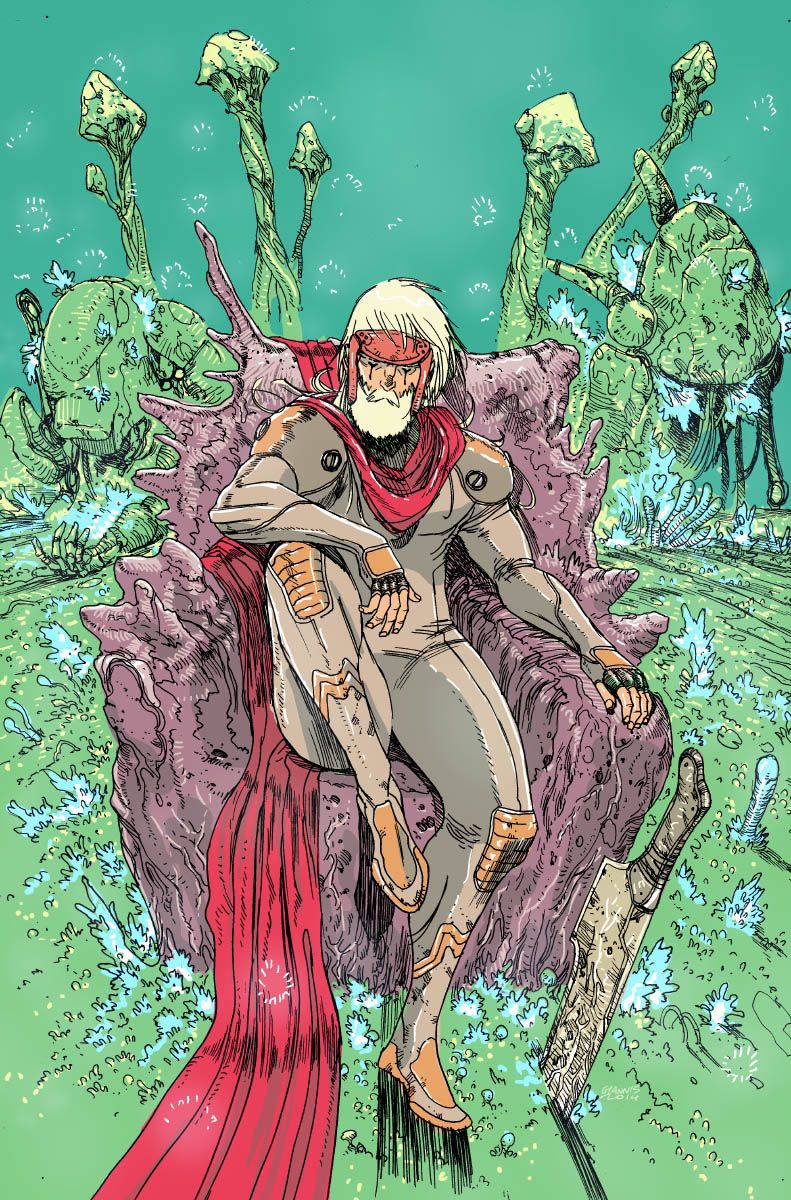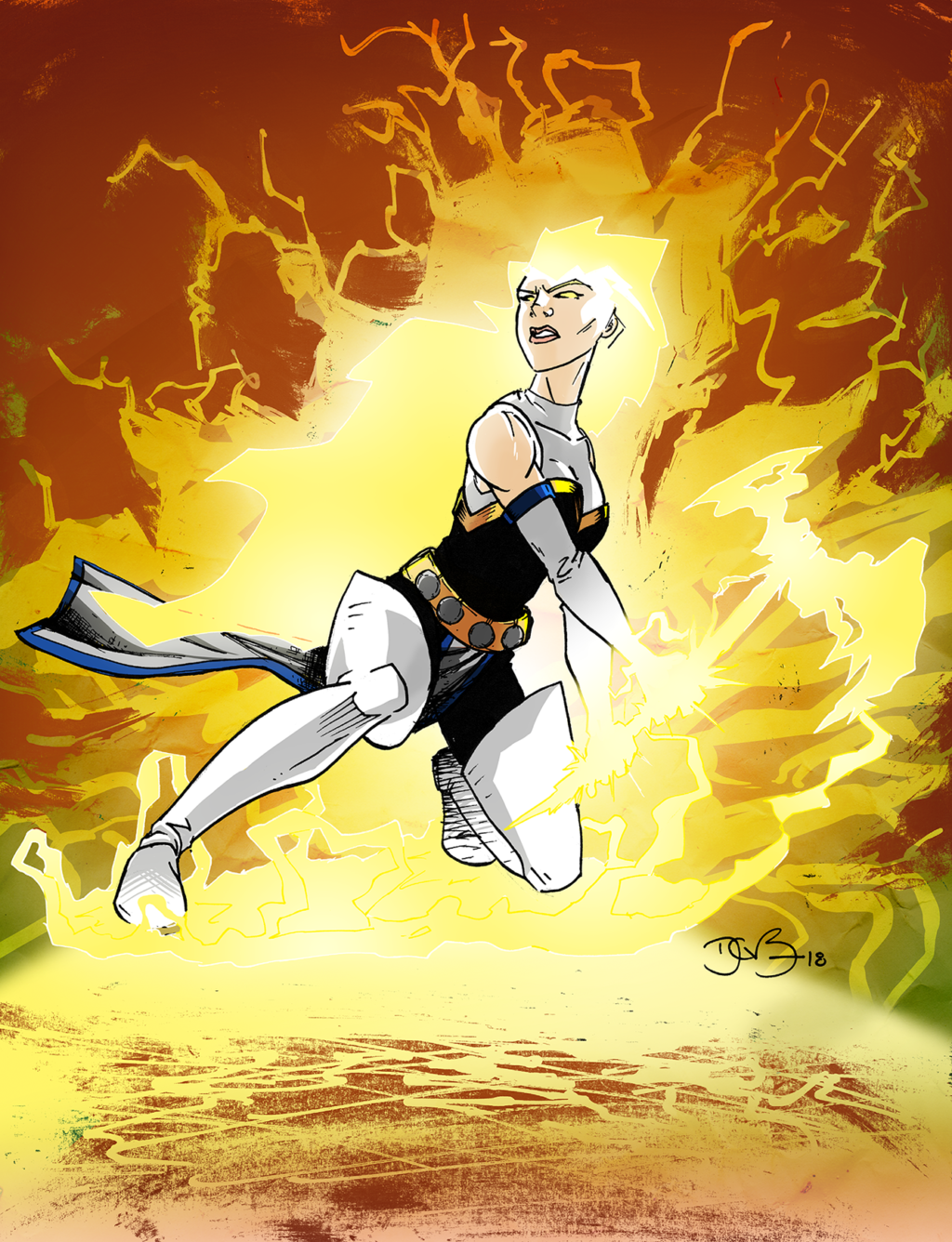The Long John Primer, Part 6
Chapter 4 marks a strange new beginning in some ways. It acts as an interlude, one about Long John dealing with what occurred in the previous three chapters and preparing––unknowingly as it may be––for the chapters to come. However, like the very first chapter, “Dead Words” is a standalone work, one that takes the temperature of not only where Long John is at this moment but also of the entire region at this point in the story.
To set the tone, there will be two posts this week that will help readers get into the mindset of where Chapter 4––and the subsequent installments––comes from, though it may not always be comfortable. So, reaching back to before the release of the first chapter, we add to the previous five entries of “The Long John Primer”––the things that help to make Long John what it is, has been, and will be.
6. The Indie Comics Factor
I’m a bit embarrassed that this honestly wasn’t the first or second post of the primer back when I started the website, but it has surely been my guiding force creatively since deciding to pursue this story in the first place.
That being said, it wasn’t the indie comics community that specifically motivated me. To say that it is would be making a big promise––indie comics is a huge industry comprised of industry professionals, professional amateurs (or “Pro-Am”), and people just doing this for fun or for the learning experience. The community is also regional––both geographic and where they interact on the internet. It’s divided by genre, as could be expected. It’s all over the place, but it’s also a tight-knit community of rugged individuals.
So, to say that they are a factor in the creation of Long John, I mostly mean in terms of the ethos that drives those that consider themselves “indie.”

I’ve talked about it before––perhaps to an annoying degree––but I can’t stress how much of a personal impact the creative team behind the 2012 reboot of Rob Liefeld’s ’90s comic, Prophet, had on me. If anything, the connection to the ultraviolent ’90s comic was what got me in the door. More than anything, it was more about answering the question of “Why?” and “How?”, only to find that the questions I asked once opening those pages were “Who?!”
Fortunately, I already had a familiarity with series co-rebooter, Simon Roy, and the eventual second head-artist of the series, Giannis Milonogiannis, but it was their approach to making comics and as advocates for independent comics––especially those made by writer-artists––that made them a personal pantheon of creative drive. Not only were they proud independent creatives, they were vocal proponents of that side of the medium, with Graham and Roy loudly condemning, in many ways, how the mainstream industry treated writers, artists, and intellectual property in general.
But it was their “buckle down and just do it” approach that certainly gave me the confidence to charge into “Sunza”, which was honestly a continuation of the basic ethos that launched Image Comics in the early 1990s, a phenomenon I witnessed in real time and undoubtedly influenced me at a young age.

However, I’d be remiss to leave out the wonderful indie community Long John has been accepted into. Being able to become colleagues––and friends!––with the likes of Taurus Comics‘ Kyrun Silva, Above the Clouds‘ Melissa Pagluica, Vorpal‘s Jason Tudor, B-Squad‘s Eben Burgoon, John Cottrell, among many, many others (honestly, please take no offense if left unmentioned) has shown that even isolated weirdos like me (like us?) can link arms and lift each other up to do bigger and better things (not to mention the incredible support given by local retailers like Ben Schwartz and Tony Asaro at Empire’s Comics Vault and Gene Farley at Comics & Collectibles).
Obviously, I think that Long John is good––or can be good, at the very least––but getting to be a part of this loose but supportive community also creates a motivation to not let any of them down, either. So, as Long John himself always picks himself up and trudges forward, I do the same through any self-doubt and fear, because I’m the only one that can tell my story.
So, that’s the Long John primer. Also, read about The Eastern Sierra Nevada Factor, The Kurosawa Factor, The Hamett Factor, The Western Factor, and The Heavy Metal Factor.

Discussion (5) ¬